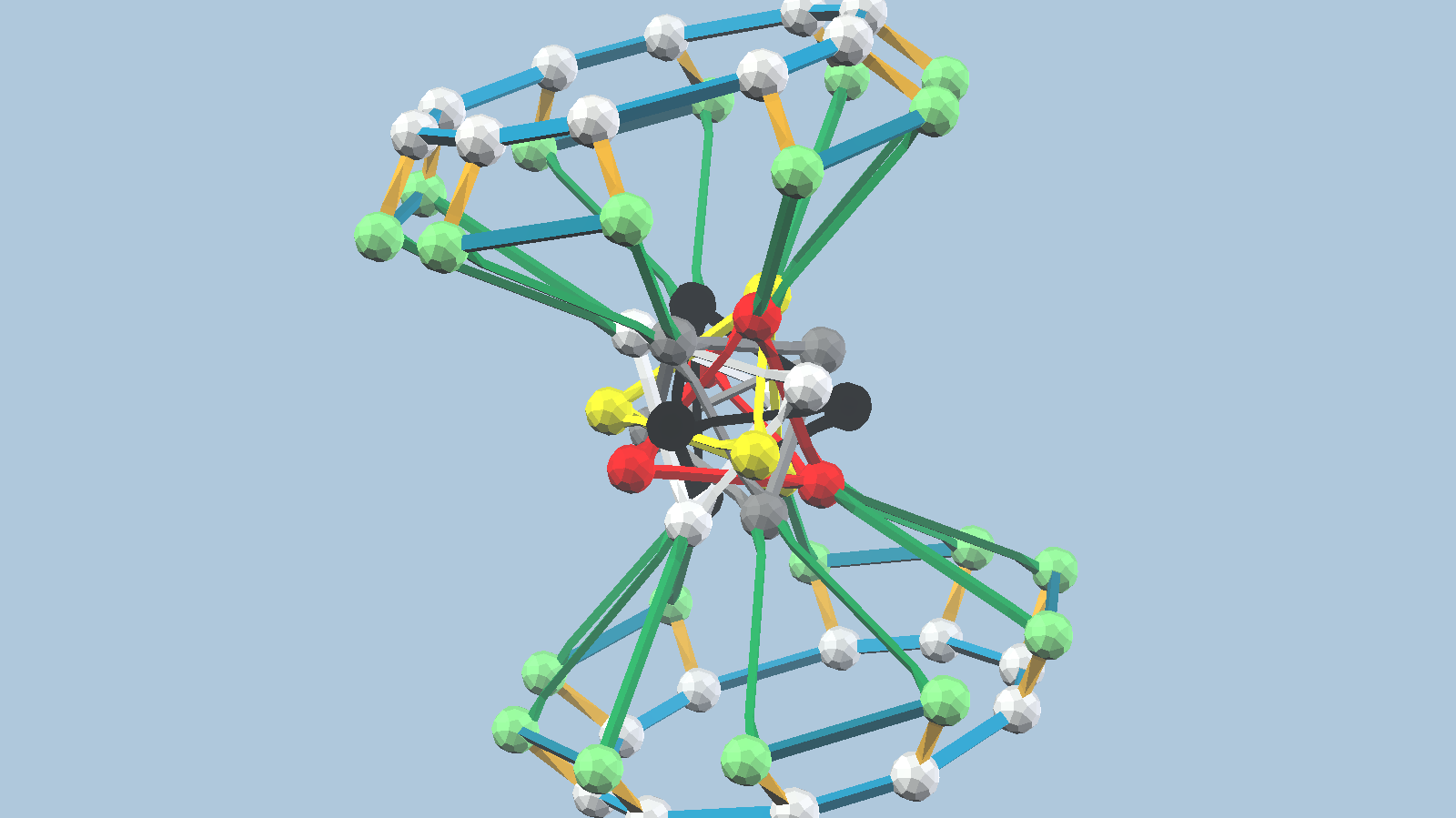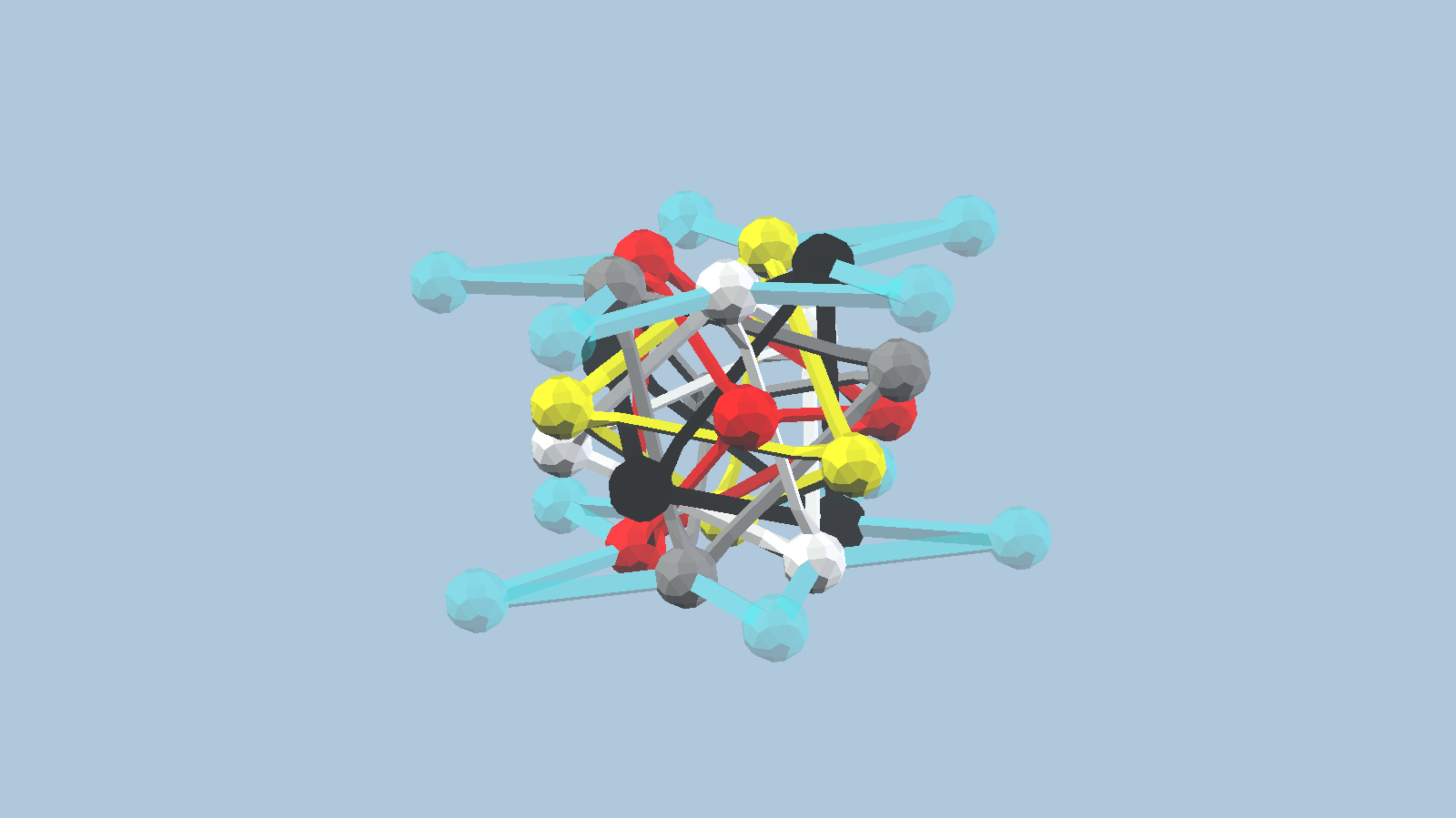A classic from the Zome Geometry book, also known as the chiricosahedron (Bower style acronym ki). Using bg1 stuts, one obtains a solid model, which could not be made more compact. However, if you do not want to have dexterity issues, an elaborate scaffolding has to be used, which exactly reproduces the edge length of the convex hull (a dodecahedron), i.e. the distance between two nearby vertices of two tetrahedra.

Using hg2 instead of bg1 struts produces a model which is larger (ratio 8:7). It is not as rigid, but still good enough. Moreover, the scaffolding is much simplier: only two hb2 pentagrams are involved. In fact, one single pentagram will do.
